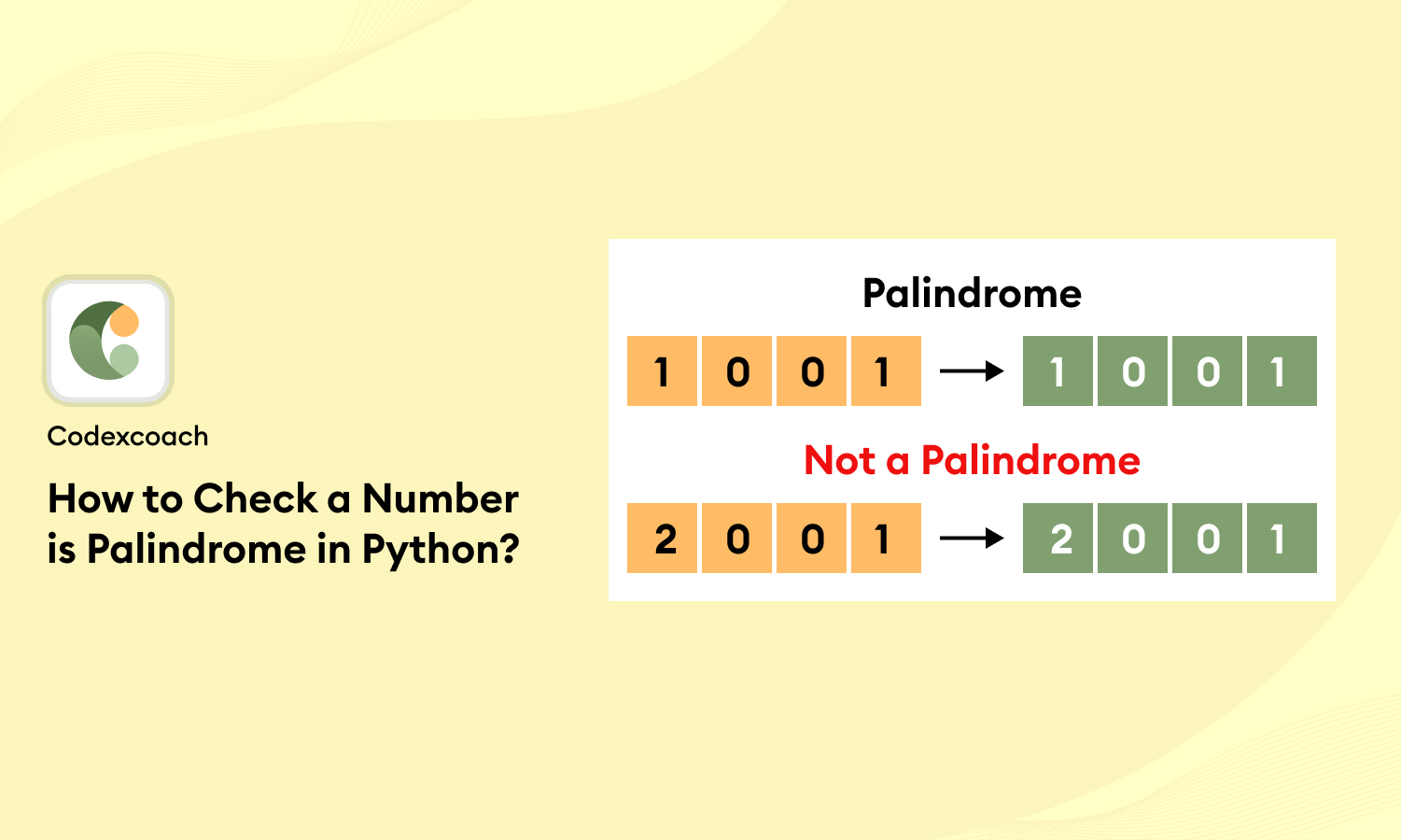Welcome to the world of Python programming! In this beginner’s guide, we’ll explore the concept of palindromic numbers and learn how to check if a number is a palindrome using Python. Palindromic numbers are fascinating mathematical entities that read the same forward and backward, making them a great problem-solving exercise for beginners.

What exactly is a palindromic number?
Before we start, it’s essential to fully grasp what palindromic numbers are. A palindromic number reads the same forwards and backward and remains unchanged when its digits are reversed. For example, 121, 2442, and 1234321 are all palindromic numbers, while 123, 4589, and 1231231 are not. Understanding this fundamental concept is crucial for determining whether a number is a palindrome or not.
To check if a number is a palindrome, we need to convert it into a string first. By converting the number to a string, we can compare its characters directly, making the process simpler and beginner-friendly. In Python, you can easily convert a number to a string using the str() function. Let’s take a look at an example:
number = 12321
str_number = str(number)
By converting the number 12321 to a string, we obtain “12321,” allowing us to manipulate and check its symmetry more conveniently.
Read more: Top 10 Python Frameworks You Must Know for 2023
Reversing the string
To determine if a number is a palindrome, we need to compare its original form to its reversed form. In Python, we can reverse a string using the slicing technique. The slicing operation enables us to access a range of characters within the string using start: stop step syntax. Here’s how you can reverse a string:
reversed_str_number = str_number[::-1]
In this example, [::-1] signifies that we want to slice the string in reverse order, effectively reversing the entire string.
Comparing the original and reversed strings
Now that we have converted the number into a string and reversed it, we can compare the two strings to determine if the number is a palindrome. By using a simple if-else statement, we can verify whether the original number and its reversed form are equal. Let’s see this in action:
if str_number == reversed_str_number:
print("Congratulations! The number is a palindrome.")
else:
print("Sorry, but the number is not a palindrome.")By comparing str_number and reversed_str_number using the == operator, we can find out if the number is it or not. If they are equal, we can display a congratulatory message; otherwise, we display an apology message.
Using a Palindrome Checker function
While the above method works perfectly fine, it can be more efficient to encapsulate the palindrome checking logic within a function. This allows us to reuse the code for different numbers. Here’s an example of a function that checks if a number is a palindrome:
def is_palindrome(number):
str_number =
str_number = str(number)
reversed_str_number = str_number[
str_number = str(number)
reversed_str_number = str_number[::-1]
if str_number == reversed_str_number:
return True
else:
return FalseWith this function, we can call it as many times as needed, passing a number as an argument to determine whether it’s a palindrome or not. This way, your code becomes more organized, modular, and easier to understand.
Bonus Tip – Handling negative numbers
So far, we have assumed that the numbers we are checking are positive integers. But what if we want to include negative numbers? The good news is we can handle this situation with a small adjustment in our code. By implementing a conditional check and converting the number to an absolute value, we can accurately determine if a negative number is a palindrome. Let’s see how this works:
def is_palindrome(number):
str_number = str(abs(number))
reversed_str_number = str_number[::-1]
if str_number == reversed_str_number:
return True
else:
return FalseBy applying abs() to the number, we convert it to its absolute value, ensuring that the negative sign does not affect the comparison. Now, we can confidently pass both positive and negative numbers to the is_palindrome() function for accurate results.
Conclusion
We have explored the concept of palindrome, learned how to convert numbers into strings for easy comparison, and examined the process step-by-step. We also discovered the benefits of encapsulating our code within a function for reusability and discussed handling both positive and negative numbers.
Now, armed with your newfound knowledge, you can confidently determine whether a given number is a palindrome or not. Keep practicing and exploring more fascinating aspects of Python programming – the possibilities are endless!





